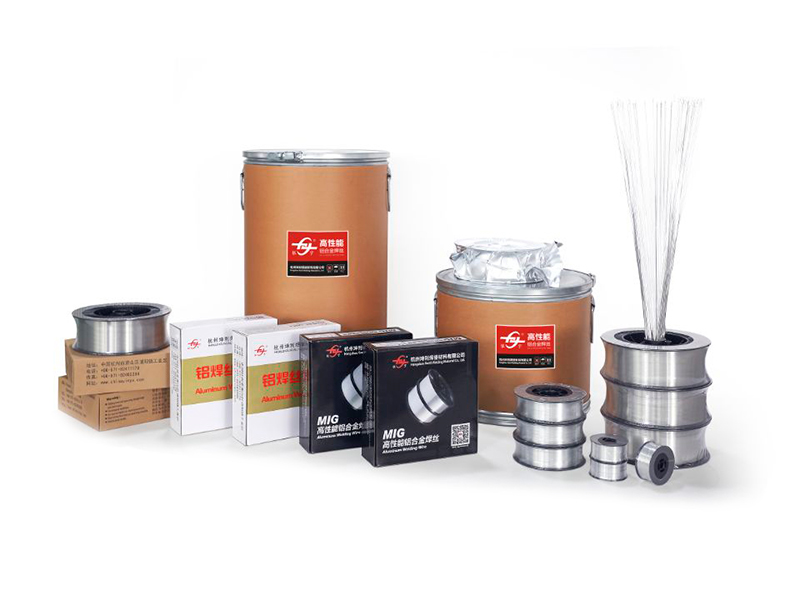What are the key advantages and challenges associated with ER4047 Aluminum MIG Welding Wire, and how does it compare to other aluminum welding wires in terms of weld quality and performance in critical applications?
ER4047 is an aluminum MIG welding wire that belongs to the 4xxx series of aluminum alloys. Composed primarily of aluminum with added silicon as the primary alloying element, ER4047 offers specific advantages and poses unique challenges in welding applications. Understanding these characteristics is crucial for determining its suitability and performance, particularly in critical applications.
Advantages of ER4047 Aluminum MIG Welding Wire:
High Fluidity and Wetting Action: The addition of silicon (approximately 11-13%) in ER4047 enhances the fluidity of the weld pool, leading to improved wetting action on the base metal. This attribute ensures better penetration and fusion, resulting in strong, sound weld joints.
Low Hot Cracking Susceptibility: ER4047 demonstrates excellent hot cracking resistance due to its higher silicon content. This characteristic is especially advantageous when welding aluminum alloys that are more prone to hot cracking, such as 5xxx series aluminum alloys.
Good Heat Conductivity: The thermal conductivity of ER4047 is comparable to that of pure aluminum, which aids in effective heat dissipation during welding. Proper heat control is essential to prevent overheating and potential distortion of the base metal.
Reduced Sensitivity to Contaminants: ER4047 is relatively less sensitive to contaminants like oils, grease, and oxides, making it more forgiving during welding processes. However, proper cleaning and preparation of the base metal are still crucial for achieving high-quality welds.
Versatility: ER4047 is suitable for welding a wide range of aluminum alloys, including 2xxx, 3xxx, 4xxx, 5xxx, and 6xxx series alloys. This versatility makes it a popular choice for various industries, including automotive, aerospace, marine, and general fabrication.
Challenges of ER4047 Aluminum MIG Welding Wire:
Lower Strength Compared to Other Alloys: While ER4047 offers excellent fluidity and wetting action, it may not provide the same level of mechanical strength as other aluminum welding wires with higher alloying elements. For critical applications requiring maximum strength, other higher-strength aluminum welding wires may be more suitable.
Limited Availability and Higher Cost: ER4047 may not be as readily available as more common aluminum welding wires like ER4043 or ER5356. Additionally, its higher silicon content and specific manufacturing processes can lead to increased production costs, impacting its market price.
Comparison with Other Aluminum Welding Wires:
ER4043 vs. ER4047: ER4043 is a popular choice for general-purpose aluminum welding due to its good weldability and aesthetics. It contains lower silicon content (around 4.5-6.0%) compared to ER4047, making it suitable for joining 3xxx and 6xxx series aluminum alloys. On the other hand, ER4047, with its higher silicon content, is often preferred for welding 5xxx series aluminum alloys and applications where hot cracking resistance is crucial.
ER5356 vs. ER4047: ER5356 is another commonly used aluminum MIG welding wire that contains higher amounts of magnesium and is preferred for joining 5xxx series aluminum alloys. While both ER5356 and ER4047 offer good hot cracking resistance, ER5356 may provide higher tensile strength and better corrosion resistance in certain applications, making it suitable for marine and structural welding.
ER4047 Aluminum MIG Welding Wire presents distinct advantages such as high fluidity, low hot cracking susceptibility, and reduced sensitivity to contaminants. These qualities make it a suitable choice for various aluminum welding applications, especially in critical situations where hot cracking may be a concern. However, it is essential to consider its lower mechanical strength compared to other welding wires and the availability and cost factors before selecting ER4047 for specific applications. Proper welding technique, base metal selection, and preparation are crucial for achieving high-quality welds with ER4047, ensuring its successful utilization in diverse industries, from automotive and aerospace to marine and general fabrication.

ER4047 Aluminum Mig Welding Wire

ER4047 Aluminum Mig Welding Wire
PREV:How does ER4043 Silicon Aluminum Welding Wire's composition and characteristics influence its suitability and performance in specific welding applications, and what are the key considerations for its successful utilization?
NEXT:What are the key metallurgical and mechanical properties of ER5154 Al-Mg Alloy Wire, and how does it compare to other aluminum-magnesium welding wires in terms of weldability and performance in marine and high-corrosion applications?
NEXT:What are the key metallurgical and mechanical properties of ER5154 Al-Mg Alloy Wire, and how does it compare to other aluminum-magnesium welding wires in terms of weldability and performance in marine and high-corrosion applications?
Related Products
-
 View More
View More
5154 Aluminum Alloy Welding Wire
-
 View More
View More
ER4043 Silicon Aluminum Welding Wire
-
 View More
View More
ER4047 Aluminum Mig Welding Wire
-
 View More
View More
ER5154 Al-Mg Alloy Wire
-
 View More
View More
ER5087 Magnesium Aluminum Welding Wire
-
 View More
View More
Aluminum Welding Wire ER5183
-
 View More
View More
ER5356 Aluminum Welding Wire
-
 View More
View More
ER5554 Aluminum Welding Wire
-
 View More
View More
ER5556 Aluminum Welding Wire
-
 View More
View More
ER1100 Aluminum Welding Wire
-
 View More
View More
ER5754 Aluminum Welding Wire
-
 View More
View More
ER2319 Aluminum Welding Wire
 English
English Deutsch
Deutsch
 English
English Deutsch
Deutsch

